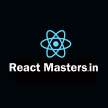React JS Interview Questions and Answers
A Comprehensive Guide

React JS Basics
Understanding React Components: Delve into the fundamental building blocks of React - its components. Gain insights into the significance of components and how they contribute to building dynamic user interfaces.
LSI Keywords: React component types, React component lifecycle
Are you familiar with the various types of React components? Whether it's class components or functional components, understanding their roles is crucial. Explore the React component lifecycle, unraveling the stages a component goes through, from birth to removal.
React JS Advanced Concepts
State Management in React: Unlock the secrets of state management in React. Learn how to handle and manipulate state to create dynamic and interactive web applications.
LSI Keywords: React state vs props, lifting state up
What distinguishes React state from props? How can you efficiently lift state up in your application? Unravel the mysteries of state management and elevate your React skills to new heights.
React JS Optimization Techniques
Performance Optimization in React: Explore the strategies and techniques to optimize the performance of your React applications. From virtual DOM to code-splitting, discover ways to make your applications faster and more efficient.
LSI Keywords: React virtual DOM, React code splitting
Have you tapped into the power of React's virtual DOM? Curious about code-splitting and its impact on performance? Dive into the realm of optimization and make your React applications shine.
React JS Best Practices:Writing Clean and Maintainable Code
Master the art of writing clean and maintainable code in React. Explore best practices, coding conventions, and tips to ensure your codebase remains robust and easy to work with.
LSI Keywords: React code readability, React best coding practices
What makes code in React readable and maintainable? Are there specific coding practices that can enhance your development workflow? Discover the secrets of crafting code that stands the test of time.
React JS Troubleshooting:Common React JS Errors and Solutions
Navigate through common errors encountered in React and their solutions. Equip yourself with the knowledge to troubleshoot issues efficiently and ensure smooth development.
LSI Keywords: React error boundaries, debugging React applications
Encountered a difficult to understand error in your React application? Learn about error boundaries and effective debugging techniques. Enhance your troubleshooting skills and become a React problem-solving expert.
React JS in the Industry:Real-world Applications of React
Explore the diverse applications of React in the industry. From e-commerce platforms to social media giants, understand how React shapes the digital landscape.
LSI Keywords: React in web development, React in real-world projects
Curious about where React is used in the real world? Gain insights into its applications in web development and various industry projects. Unleash the potential of React beyond the interview room.
Now Let's Explore more of what type of Questions & Answers will freshers will get:
Here are 20 React JS interview questions along with their answers for freshers:
1. What is React?
Answer: React is a JavaScript library for building user interfaces. It allows developers to create reusable UI components that efficiently update and render changes.
2. Explain JSX?
Answer: JSX (JavaScript XML) is a syntax extension for JavaScript recommended by React. It enables the mixing of HTML-like code within JavaScript, making it more readable and convenient for defining UI components.
3. What is the significance of Virtual DOM in React?
Answer: The Virtual DOM is a lightweight copy of the actual DOM. React uses it to optimize rendering, making updates more efficient by minimizing direct manipulation of the real DOM and improving overall application performance.
4. Differentiate between Props and State in React?
Answer: Props are external inputs passed to a component, while state is internal data managed within the component. Props are immutable, whereas state can be changed by the component.
5. Explain the component lifecycle in React?
Answer: React components go through three main phases: Mounting, Updating, and Unmounting. Each phase has specific lifecycle methods (e.g., `componentDidMount`, `componentDidUpdate`) that allow developers to execute code at different points in a component's life.
6. What is the purpose of setState() in React?
Answer: `setState()` is used to update the state of a React component. When the state is updated, React re-renders the component, reflecting the changes in the user interface.
7. What are React Hooks?
Answer: React Hooks are functions that enable developers to use state and lifecycle features in functional components. Examples include `useState` for managing state and `useEffect` for handling side effects.
8. Explain the concept of conditional rendering in React?
Answer: Conditional rendering involves displaying different content based on certain conditions. In React, this can be achieved using conditional statements like `if` or ternary operators inside JSX.
9. What is the significance of keys in React Lists?
Answer: Keys are used to uniquely identify elements in a React list. They help React identify which items have changed, been added, or removed, facilitating more efficient rendering of lists.
10. How does React handle forms?
Answer: React handles forms using controlled components. State is used to control the input elements, and onChange events trigger updates, ensuring that the state and the UI stay in sync.
11. What are Higher-Order Components (HOCs) in React?
Answer: HOCs are functions that take a component and return a new enhanced component. They are used for code reuse, logic abstraction, and to modify the behavior of components.
12. Explain the purpose of React Router?
Answer: React Router is a library for handling navigation in React applications. It allows developers to create a single-page web application with navigation by changing the URL without triggering a full page reload.
13. What is Redux, and why is it used in React?
Answer: Redux is a state management library for JavaScript applications. It is used in React to manage the application's state in a predictable and centralized manner, making it easier to maintain and debug large-scale applications.
14. What is the significance of the Context API in React?
Answer: The Context API provides a way to pass data through the component tree without having to pass props manually at every level. It simplifies state management and makes it more efficient to share values like themes or user authentication across components.
15. Explain the concept of PureComponent in React.
Answer: `PureComponent` is a class component in React that automatically implements the `shouldComponentUpdate` method with a shallow prop and state comparison. It helps optimize rendering by preventing unnecessary updates.
16. What are React Fragments?
Answer: React Fragments are a way to group multiple elements without introducing unnecessary parent elements in the DOM. They allow cleaner and more semantic component structures.
17. How does error handling work in React?
Answer: React provides error boundaries to catch JavaScript errors anywhere in the component tree. By using the `componentDidCatch` lifecycle method, developers can handle errors gracefully and prevent the entire application from crashing.
18. What are PropTypes in React?
Answer: PropTypes are a way to specify the expected data types of props passed to a component. They help catch potential bugs early by providing warnings in the console if the types don't match.
19. Explain the significance of the React DevTools.
Answer: React DevTools is a browser extension that allows developers to inspect and debug React component hierarchies, state, and props. It provides a powerful toolset for enhancing the development and debugging experience.
20. How can you optimize performance in a React application?
Answer: Performance optimization in React involves techniques like code splitting, lazy loading, memoization, and proper usage of shouldComponentUpdate or React.memo. These strategies ensure a smoother and faster user experience.
These questions cover a range of React JS concepts and will help freshers prepare for interviews in the field.






Comments
There are no comments for this story
Be the first to respond and start the conversation.